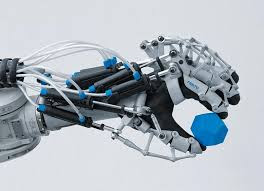Introduction to Mechanical Advantage and Efficiency
Introduction to Mechanical Advantage and Levers
- List five things machines do. (p 8)
- A machine is a _______________ made of one or more _______________ that work together to accomplish a task. (p. 8)
- Describe the subsystems a can opener is made of and what the role of each subsystem is. (p. 8/figure 2)
- Explain what a mechanism is. (p. 8)
- In your own words, explain what a self-correcting control is. (p. 9)
- Explain what a lever is. (p. 10)
- Give four or five real-world examples of levers. (p. 10)
- Explain why are levers useful. (p. 10)
- Levers are broken down into three types. List them. (p. 10)
- Give one or two real-world examples for each type of lever. (p. 10/11/figure 1/2/3)
- All levers require a fulcrum, load force and effort force. Explain what each of these are. (p. 10)
- Make a quick sketch of a Class I, Class II and Class III level. Neatly label the fulcrum, effort force and load force on each diagram you made. Also label the load arm and effort arm (p. 10/11/figure 1/2/3)
- Explain, in your own words, what mechanical advantage means. Also write down the formula used to calculate mechanical advantage (MA). (p. 11)
- What are the units for mechanical advantage (MA)? (p. 11)
- If the MA is LESS than 1, what do we know about the effort force and load? (p. 11)
- If the MA is MORE than 1, what do we know about the effort force and load? (p. 11)
- Which lever(s) have an MA of less than one? (p. 11)
- Which lever(s) have an MA of greater than one? (p. 11)PART 2 (p. 10-17)1. Use figures 1, 2 and 3 on pages 10-11 to answer the following: The load arm of a lever is defined as the distance from the ___________ to the ___________. The effort arm of a lever is defined as the distance from the ___________ to the ___________. (p. 10/11)2. Write out the formula for MA of levers. (p. 12)3. If the effort arm gets longer, what happens to the MA? (p. 12)4. If the length of the load arm decreases, what happens to the MA? (p. 12)5. Solve for the MA of a lever with an effort arm length of 40cm and a load arm length of 8cm.Include the formula, substitution step and final answer.6. What type of lever is a tennis racket? (p. 12)7. When using a tennis racket, the MA is always ____________ 1. (p.12)8. When swinging a racket, the effort force is always _______ (greater/smaller) but the load force moves _____________ than the effort force in the same amount of time.9. Think of two other pieces of sports equipment that are class III levers, in which the effort distance is smaller than the load distance.10. Define and write the formula for velocity ratio. (p. 12)11. Write the formula for finding the percent efficiency of a mechanism. (p. 13)12. What force causes the percentage efficiency of a machine to be less than 100%? (p. 13)12. Complete page 13 question #4a) and 4b) (Hint: figure 2 on page 16/17)13. Complete page 13 question #514. Make a list of two class 1, two class 2 and two class 3 levers used in your daily life. Label the fulcrum, effort force, load force, effort arm and load arm.





